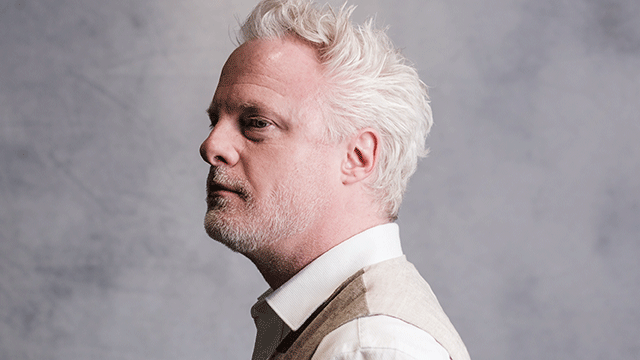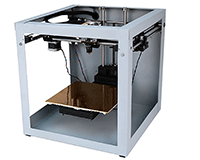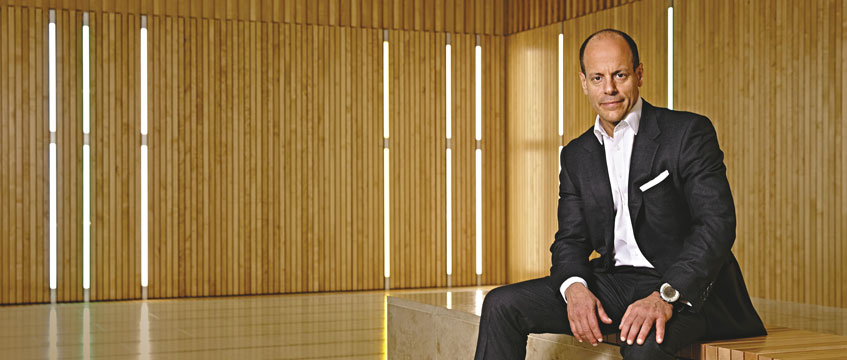The first time you hear about 3D printing, it all sounds rather Star Trek. Just as the “communicators” used by the crew of the Enterprise foreshadowed the mobile phones invented a quarter of a century later, it is tempting to see 3D printing as the modern-day equivalent of the “replicator”, from which Captain Picard was apt to order “Earl Grey, hot”.
You can’t get a 3D printer to give you a cup of tea, at least not yet, but the first hurdle to get over with the concept of 3D printers is that they are not “printing” at all, at least not in the sense that the man in the street might understand printing.
What they are doing is reproducing solid objects, in a variety of materials. They are, in effect, a method of manufacturing objects. If you want to see an example of what they can already do, take a look at the rather smart ceramic espresso cup on www.miproto.com under the case studies section.
Clothes and car parts
Other potential uses for 3D printing include clothes, car parts and even human organs. There was a bout of hysteria in the US last year when it emerged that a 3D printer could produce a gun: it looked like a toy, but it did work. It’s not really surprising that when some people hear this sort of thing, they leap rapidly to the conclusion that, given development time, 3D printers will be the manufacturing mode of choice for the modern world. And that, as you might already have inferred, could have huge consequences for the property industry. Who needs warehouses when you can print objects on demand?
The question, then, is whether all this is realistic and, if so, how soon is it going to happen?
There is certainly no shortage of property people who think that 3D printers are going to prove very significant. Amaury Gariel, CBRE’s managing director for industrial logistics in the EMEA region, is among those who think that 3D printers will be “a game-changer” for the property world.
As things stand, they can take many hours to make an object, depending on its complexity, but Gariel’s view of the future for 3D printing is influenced by how other technologies have developed.
He says: “They will improve. What you can do with them in 10 years’ time will be completely different to what you can do now. We are going to be able to produce huge quantities of goods without going to a shop at all. And it will cut down hugely on import and export.”
Another property executive with the opinion that the effect of 3D printing is going to be dramatic is Andy Rothery, head of Deloitte Real Estate in the UK.
Like Gariel, Rothery admits he doesn’t know exactly how it is going to develop, just that experience tells him it is going to develop dramatically. Rothery tells a story about how, 25 years ago, when he had just been given his first senior managerial role at Arthur Andersen, a colleague given a similar promotion had chosen to go off and do his own thing. That colleague was David Ross and the company he helped establish was Carphone Warehouse. In this year’s Sunday Times Rich List, Ross’s net worth was estimated at £710m. Car phones have gone rather well for him.
Rothery says: “When I talk about 3D printing, that story influences me a lot because it illustrates how fast things can develop and how things can move in unexpected directions.”
For 3D printing, those directions have already included making clothes at this year’s Paris Fashion Week, where a fringe event was dedicated entirely to dresses that were “printed”.
Rothery foresees a time when the high street will become “an outsourced wardrobe” for many.
“I can see a time when someone can say ‘I want an outfit for this evening’ go to a high-street store and have one printed in their size on the spot,” he says.
Overflow wardrobe
More than this, Rothery thinks that because living space is becoming tighter with the demands on housing, the high street could also be used as an overflow wardrobe – a storage facility for a population whose living space is getting smaller and smaller. Warehousing yes, but not as we know it.
If Rothery’s view seems overly visionary, it is echoed, at least in the fundamentals, by specialists such as Peter Marsh, author of The New Industrial Revolution. Marsh, who was guest speaker at last month’s Jones Lang LaSalle briefing on 3D sheds, also describes the 3D process as “another form of manufacturing at relatively low cost” and says it could enable the return of small-scale factories to London and other inner cities.
But what 3D manufacturers will need, says Marsh, “is a mix of space – manufacturing, design and office”. Under this vision, the 3D future looks more artisan than mass production, and more mixed-use than warehouse, allowing for an individuality that many current mass production processes do not.
This capacity for designing things individually is one of the virtues of the 3D process that is emphasised by Josh Valman, a London-based teenage entrepreneur (now 19, but who started in business at 15) who has set up Miproto (pronounced my-proto) to help design ideas come to reality.
It was his firm that helped with the nice espresso cups mentioned previously, made in a shape that no mould could have produced.
Vision to reality
What Valman does, in his own words, is “to take ideas and make them real”. But one of the interesting things about his vision of the future is that it seems rather more restrained than outside observers might expect. He points out, for example, that 3D printing is not only not immediate (it can take 48 hours to produce something), but that the time taken by machines to produce something is not falling all that fast.
He says: “The technology isn’t as new as is sometimes made out. Machines that are 10 years old are only two hours slower than the machines made now.”
So while you might expect the young entrepreneur to be the most bullish of futurologists, he is in fact rather conservative. Valman sees the future of 3D as an important but specialist technology, rather than a mass production one.
“It works for some things, but not others,” he says.
Where 3D’s real power lies, says Valman, is in “making prototypes that could revolutionise manufacturing further down the line”.
It could also change the shape of buildings, he adds. It has the potential to make custom structures in shapes that have so far been difficult for traditional architects.
Overall, it is hard to reach firm conclusions on what 3D printing will bring the world in a decade or two. But it does seem it will bring some dramatic changes; it’s just that nobody, even those that work in the industry, are entirely sure what they will turn out to be. As always, just be prepared for change.
How 3D printers work
3D printers work by building objects up layer by layer from a particular material, which is why the method is sometimes called additive manufacturing.
Plastics, ceramic powders or metals such as titanium alloy are among the raw materials used by 3D printers. Lasers are often used to melt material before each layer is put into place.
Downsides include the fact that the process can take a long time with current technology. Even with the most sophisticated machines, it takes several hours to print, say, a body panel for a car.
The cost of materials can also be high. Acrylonitrile butadiene styrene is probably the most common 3D printing material and costs around $2 (£1.25) a kilo, but bespoke powders or metal-based granules can cost 50 times as much.
One of the big similarities with ordinary printers is that the makers of the printers themselves require users to buy material from them and can control the price.
As the 3D printer market develops, the capabilities of the machines is likely to go up and the cost of printing is likely to go down. How far and how quickly this happens will be crucial to how quickly the impact of 3D printing takes widespread effect.











